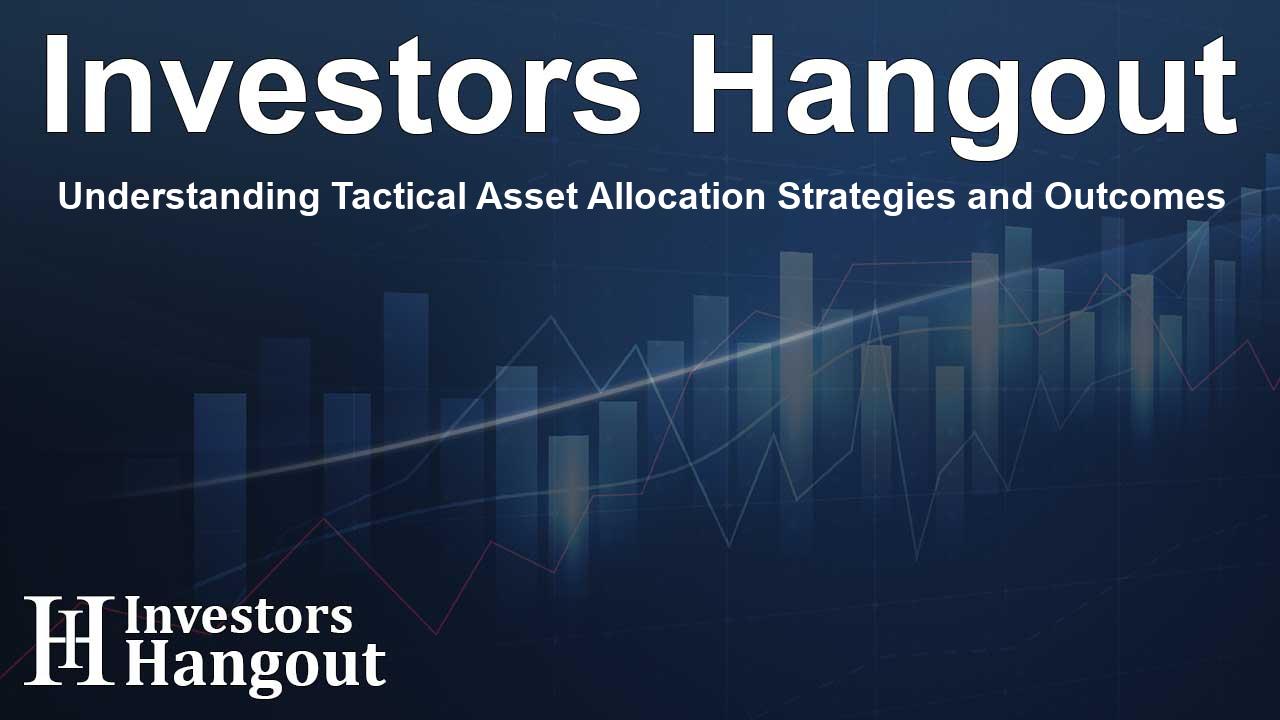Understanding Tactical Asset Allocation Strategies and Outcomes

Exploring the Dynamics of Tactical Asset Allocation
Tactical asset allocation (TAA) has recently come under scrutiny, with claims that such strategies have consistently fallen short of expectations.
However, before dismissing TAA entirely, it's essential to understand the nuances involved. An informed investor can see that adjusting asset class weights can be beneficial, but this requires discernment to separate effective methods from less successful ones in portfolio management.
Let’s delve deeper into why TAA might not only be relevant but could also be quite advantageous for investors.
Clarifying the Basics of TAA
To engage in a meaningful conversation about TAA, we must start by defining what it entails. Different interpretations exist, spanning from aggressive, intuitive strategies to more systematic, rule-based approaches that moderately adjust asset weights.
A greater inclination toward systematic strategies strengthens the case for TAA as a robust risk management tool. Misunderstanding TAA’s nature can lead to misconceptions about its efficacy, particularly when comparing disparate approaches within this strategy category.
Ultimately, TAA can be understood as actively adjusting asset weights. Yet, this definition barely scratches the surface since passive approaches still involve a degree of asset allocation tweaking that could fall under TAA's umbrella. Evaluating TAA requires careful examination, as simplistic top-down analyses often reveal little regard for its complexities.
Diverse Outcomes Across TAA Strategies
The performance and risk profiles of TAA strategies can show a wide array of results—some strategies may excel while others falter. Average results are common, hence it's vital to deeply analyze TAA strategies rather than relying on surface-level evaluations.
The inconsistency of TAA strategies challenges the notion of categorizing them under a single umbrella. Morningstar's database lists numerous funds, but many of these no longer exist, painting an incomplete picture. It's not sufficient to merely report on the category's average performance, as that can obscure individual strategy merits and pitfalls.
Benchmark Selection is Key to Evaluation
In investment analysis, particularly for TAA, benchmarking is paramount. Morningstar's analysis comparing TAA strategies with a standard 60/40 stock-bond mix could lead to misleading conclusions, as not all funds align directly with this benchmark.
Moreover, if one were to compare a systematic TAA strategy with a passive 60/40 asset allocation that only rebalances annually, it becomes necessary to examine risk and return comprehensively rather than merely looking at past performance metrics. A TAA portfolio achieving significant returns with considerably less risk can, in fact, represent a successful strategy, validating the importance of customized benchmarks.
Those TAA Strategies That Thrive
Given the variety within TAA approaches, it’s normal to find both successful and unsuccessful strategies. Research has shown that certain techniques can yield promising results over time.
One noteworthy method is leveraging valuation metrics to adjust equity weights to reflect expected returns. For example, Robert Shiller’s cyclically-adjusted price-to-earnings ratio (CAPE) serves as a predictive tool for long-term stock returns, pointing toward the potential profitability of such systematic strategies.
Additionally, CAPE and its variants merely scratch the surface of what empirical research offers regarding asset allocation. Numerous studies reveal strategies capable of effectively predicting risk and expected returns, highlighting the value of adjusting asset weights as a strategic move within TAA.
The Overview on TAA Effectiveness
When assessing TAA strategies, a case-by-case evaluation approach is vital, emphasizing relevant benchmarks tailored to the unique opportunities and risk-return objectives involved. This contrasts sharply with more traditional evaluations applied to active managers in mainstream investment spaces.
A broad review of active large-cap managers versus an index can yield useful insights, especially given the wealth of performance data available in that domain. However, utilizing such methodologies in the TAA domain fails to account for its inherent variety and differing interpretations.
In light of this, a robust examination of TAA results often reveals a more optimistic narrative than what broad assessments may indicate. While average funds may paint a mediocre picture, many individual strategies possess distinct strengths that underscore the viability of TAA.
Frequently Asked Questions
What is Tactical Asset Allocation?
Tactical Asset Allocation (TAA) involves actively managing asset weights in a portfolio to capitalize on market opportunities and manage risk dynamically.
How does TAA differ from Strategic Asset Allocation?
TAA focuses on short-term market movements for adjustments while Strategic Asset Allocation is about setting longer-term targets based on an investor's goals and risk tolerance.
Are all TAA strategies equally effective?
No, TAA strategies can yield a wide range of outcomes. Each should be evaluated individually based on methodology, risk profile, and market conditions.
Why are benchmarks important for evaluating TAA?
Benchmarks provide a reference for performance assessment. Customized benchmarks help in accurately evaluating a TAA strategy according to its specific goals.
Can TAA be beneficial for all investors?
While TAA offers opportunities, its effectiveness largely depends on the investor's ability to analyze and implement strategies adequately in their portfolio. Experienced investors may find it more beneficial.
About The Author
Contact Thomas Cooper privately here. Or send an email with ATTN: Thomas Cooper as the subject to contact@investorshangout.com.
About Investors Hangout
Investors Hangout is a leading online stock forum for financial discussion and learning, offering a wide range of free tools and resources. It draws in traders of all levels, who exchange market knowledge, investigate trading tactics, and keep an eye on industry developments in real time. Featuring financial articles, stock message boards, quotes, charts, company profiles, and live news updates. Through cooperative learning and a wealth of informational resources, it helps users from novices creating their first portfolios to experts honing their techniques. Join Investors Hangout today: https://investorshangout.com/
The content of this article is based on factual, publicly available information and does not represent legal, financial, or investment advice. Investors Hangout does not offer financial advice, and the author is not a licensed financial advisor. Consult a qualified advisor before making any financial or investment decisions based on this article. This article should not be considered advice to purchase, sell, or hold any securities or other investments. If any of the material provided here is inaccurate, please contact us for corrections.
